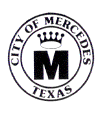

| Lee Long | Fall 2002 |
| History 1302 | Hines |
Ms. Long's Interview with Lorraine Kennedy
Ms. Long's Annotated Bibliography

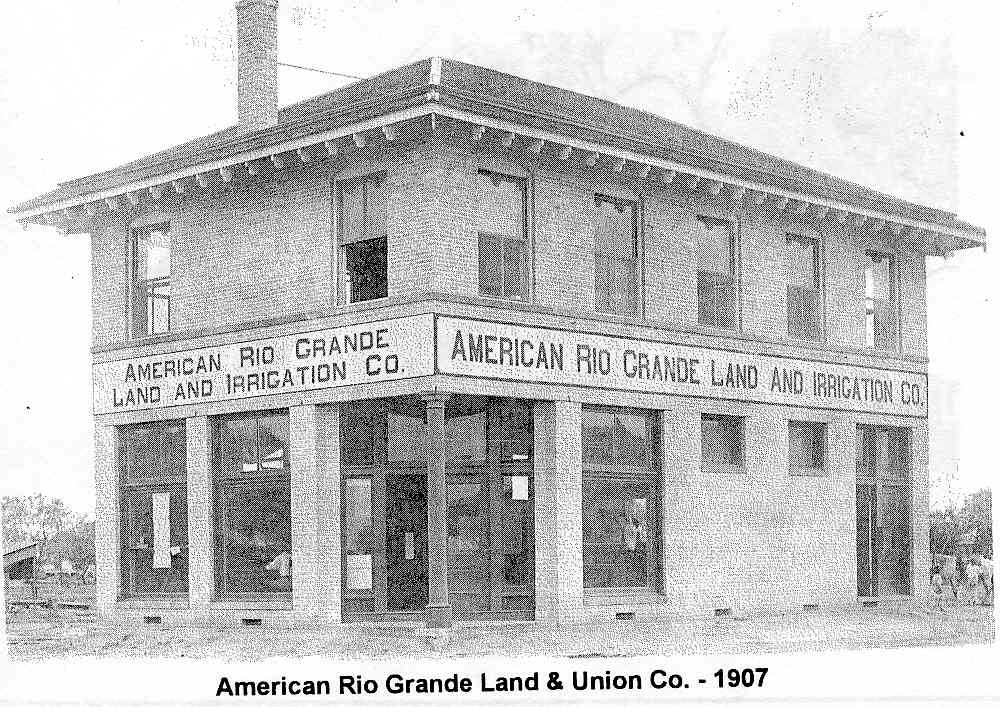
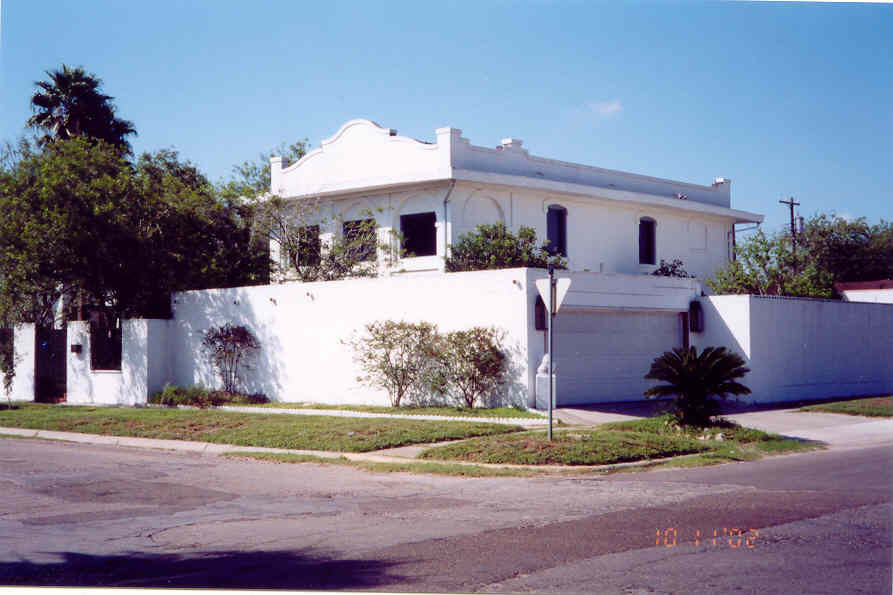
After the railroad reached the Mercedes land site Mr. Silver moved there with his family in 1905. When they first arrived they were forced to live in a boxcar on a siding of the railroad. Within a year a house had been built for the manager, which was to be know as the Silver House, and still stands today. Two years later Mr. Silver had his own house built just south of the company house.
Mr. Silver was to be responsible for the purchase of land, supervision of the construction, development of the irrigation system and layout of the town. He stayed influential in Mercedes for many years, at one time being a Judge for Hidalgo County. In 1907, the surveying being finished, a strip of land 500 ft wide was cleared from the river to the railroad, a distance of 7 miles. To make the land flourish Sam Robertson had 300 mule teams scooping out dirt for what was to be the canal system. Sam Robertson, a Missouri native, is also responsible for the establishment of the Spider Railroad, so called for its intricate web of lines and spurs, in 1912. This railroad connected the many area produce centers with the major railroads making it possible to ship the produce to markets nationwide.
People came to the town from all over. There were settlers from Pennsylvania, Missouri and North and South Dakota among others. There were some Spanish settlers from across the river also with names that were from well-known families. The Immanuel Lutheran Cemetery was the first established cemetery in Mercedes and its headstones carry names of many of the settlers of Mercedes. The oldest grave is that of Wilhelm Schumacher who died in 1911 and was reburied in the cemetery from his family farm. The names of the headstones show a wealth of cultural heritages many being from European descent. Included among the names are those of German, Norwegian, Finnish and Russian settlers who came to the area from the Midwest as well as Hispanic names. A short list of some of these names is Kallis, Hoapoja, Hoppe, Hensley, Westfall, Weber, Borchelt, Erchinger, Mier, Neuhaus, and Fossler among many others.
Prior to the 1940’s the population was much more ethnically mixed than it is today. The majority, of course, were Anglo and Hispanic American – about equal in number. Several families of European descent emigrated from Mexico about 1910 as well as many Mexicans. There were several Japanese families. Many of the produce buyers were Jewish, as were the owners of several dry goods stores, clothing stores and a jewelry store. There were enough Jewish people to support a synagogue. The building still stands today but is now a Christian Science reading room. As home freezers became popular the production of winter vegetables was less profitable and the buyers went elsewhere. The Japanese were interred away from the Valley and often did not return. Many young men, after serving in the military, were attracted to other areas. Meanwhile, immigrants from Mexico were increasing. Mexican laborers were given “green cards” to work in the states during WWII. The Brucero program brought more farm workers. The amnesty program encouraged many to become citizens. Today – aside from the winter visitors from northern states the population is about 90% Hispanic American and Mexican Nationals.
For the first 15 years the town was declared “dry” by the Rio Grande Company. Restrictions on buildings were stiff…you couldn’t build anything that cost less than $2000 if it was a house and $3000 if it was a business. There was a publicity campaign to sell the town to northern settlers and prospective buyers were brought in by railroad and given tours of the area. The buyers were treated to fairly lavish entertainment in the form of parties and were then shown the more prosperous farms in the area. Agriculture was started with grapes, citrus and truck crops. Because of the mild climate and the availability of the railroad Mercedes became known for its winter vegetables, which were shipped to the Midwest. By 1908 the town had grown to a population of 1000 and had shown significant development by building a school, feed store, lumberyard, livery stable and newspaper. The first bank also opened in 1908. Three years later the first public library was built.
Of interesting architectural note is the building of an Aladdin Home in 1915. This structure and several others were a result of Mercedes being one of the first cities formed as the railroad was moving west and some of the homes were bought by catalog. The Aladdin Home was brought in by rail and constructed by plans from the numbered pieces sent by the company, which was in Michigan.

Mercedes played its part in supporting WWI. There were 2 camps of soldiers just outside of town during the war, Camp Mercedes and Camp Llano Grande. These camps were home to 15,000 soldiers. During that time in the year 1916 the First North Dakota Infantry Regiment was order to Mercedes in order to protect the town from raids across the border by the Mexican bandit, Pancho Villa. In 1917 the First North Dakota Infantry Regiment was order to war and renamed the 164th Infantry Regiment.
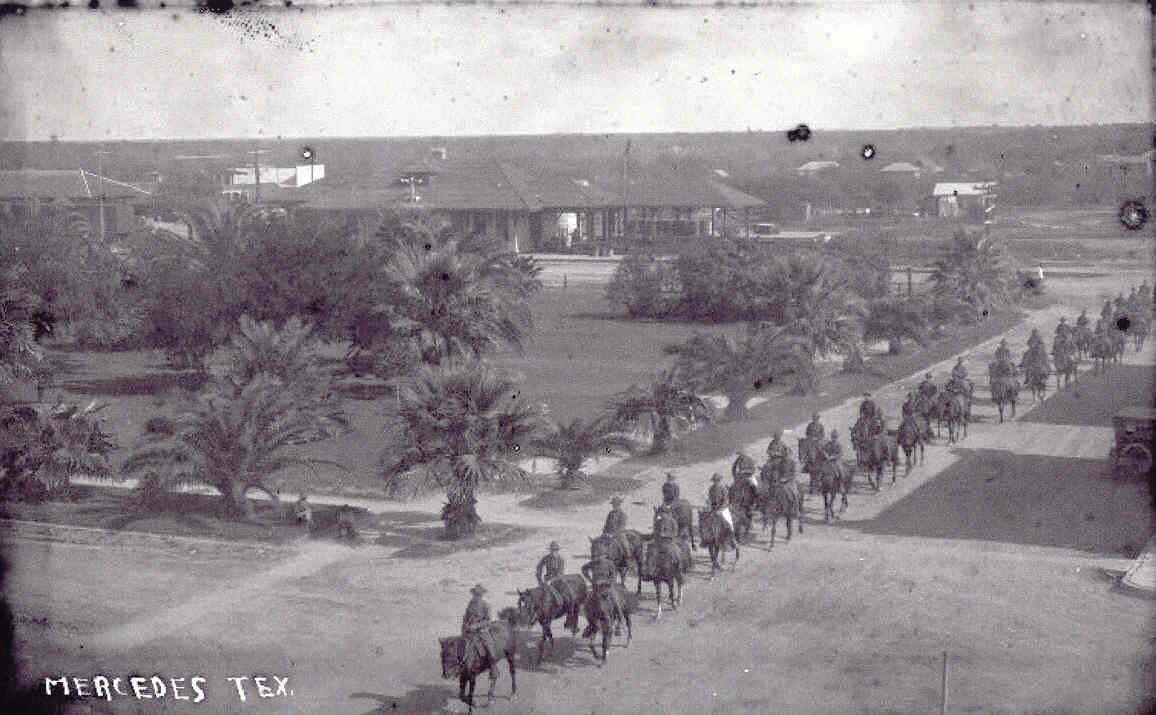
In 1918 the Mercedes City Council passed an ordinance declaring that it was
illegal for anyone to speak German or any other language used by the opposing
forces for the duration of the war. This ordinance was extended to cover
advertising, preaching, lecturing and entertaining in the German language. The
author’s Grandfather, O.J. ‘Red” Schaeffer, was a jitney driver during the days
when thousands of soldiers were stationed at Llano Grande Lake and at Mercedes.
Being a second-generation American citizen originally from a German community up
north this language policy no doubt caused him some distress. 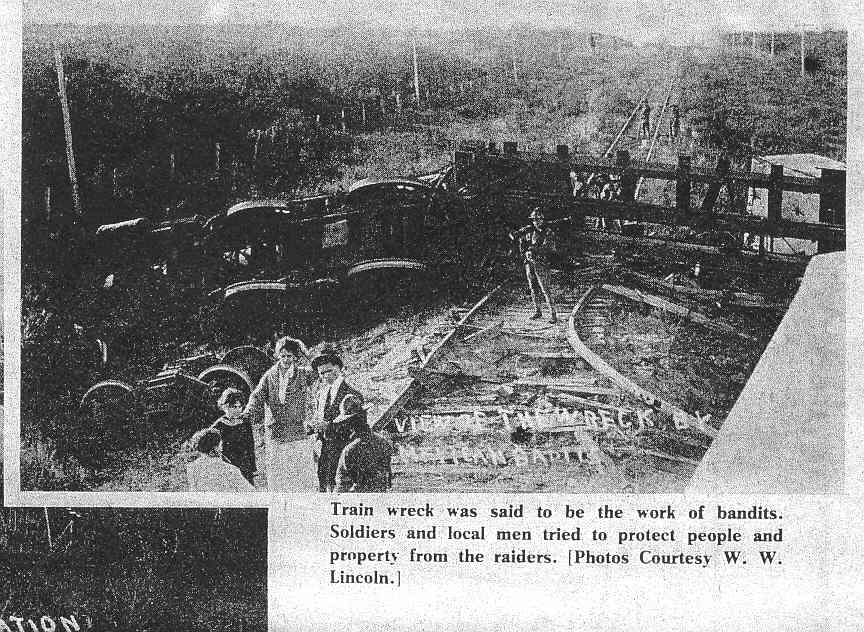
Between 1915 – 1916 there were border patrols because of the Mexican revolution. The Bandits used to come across the border and rob…ransack…kill. During 1915 a band of rebels rode through Mercedes down Main Street. This is according to Carlos Leal, a long time resident. “You could hear the pounding of hooves. There must have been a band of 25 to 30 of them. We were afraid to light the kerosene lamps. The next day a bunch of people crowded around the Mercedes City Park. They had a horse the bandits had left there with the Mexican flag tied from its neck to tail. It had a warning with roughly made letters in Spanish. Translated it meant: Mexico-Texans liberated armies.”
In 1921 the American Rio Grande Land and Irrigation Company sold its interest
in the town to Seay Brothers and Clarence Linz of Dallas. They made extensive
improvements to the area and soon developed the land into the fertile area it is
today.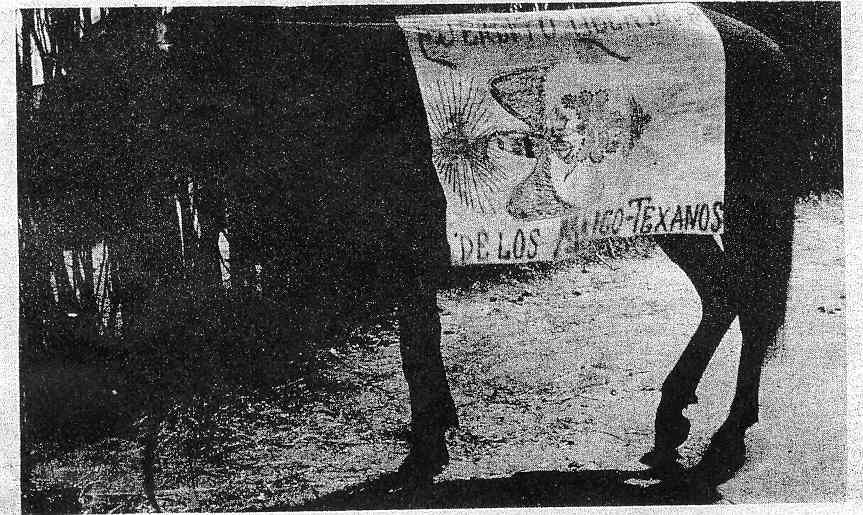
Mercedes supported the growth of other towns in the valley area with its own development. For many years Mercedes had the biggest grocery store in the area. Established in 1918 by the Garcia Bros. it served people from all over the valley. The fire, which destroyed it in 1926, was one of the biggest in Mercedes history. The store was rebuilt and continued to serve the valley area for many years. Unfortunately it no longer exists today. For about 5 years after the near by town of Weslaco was built they got their mail from the Mercedes Post Office which was established in 1907.
Things come and go over the course of a history in any town and Mercedes is no exception. Among the more interesting things that Mercedes can claim in its past are the button factory and the Confederate Air Force. Some things however, decide to grow and make a town recognizable for its existence there. For that Mercedes can thank the Rio Grande Valley Livestock Show.
In 1929 many people started collecting clamshells from the Resaca and canals and sold them to the button factory. It was called the Continental Button Co. and made mother of pearl buttons. This was a rather smelly enterprise and the residents often had to deal with the fishy odor from the piles of clamshells drying in the sun along the canal bank. The buttons were made by punching them out of the clamshells. There was a lot of left over debris. People used this to pave their driveways.
Mercedes has been honored to claim a Congressional Medal of Honor winner among its residents. William George Harrell while not born in Mercedes moved here during his youth. He graduated from Mercedes High. He attended college at Texas A & M and graduated in the class of 1943. Harrell entered service at Mercedes, Texas. His courage and bravery stand as an example to all. The following is from the army website and is the commendation given to Harrell while he was in the hospital recovering from injuries received during combat.
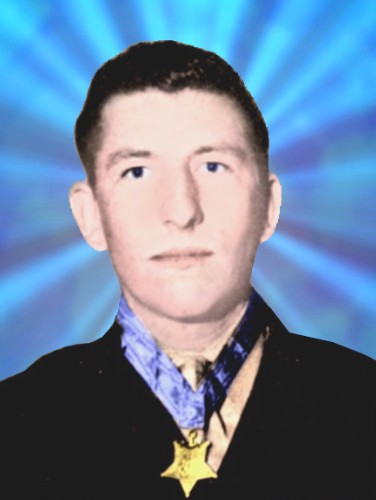
HARRELL, WILLIAM GEORGE
Rank and organization: Sergeant, U.S. Marine Corps, 1st Battalion, 28th
Marines, 5th Marine Division. Place and date: Iwo Jima, Volcano Islands, 3 March
1945. Entered service at: Mercedes, Tex. Born: 26 June 1922, Rio Grande City,
Tex. Citation: For conspicuous gallantry and intrepidity at the risk of his life
above and beyond the call of duty as leader of an assault group attached to the
1st Battalion, 28th Marines, 5th Marine Division during hand-to-hand combat with
enemy Japanese at Iwo Jima, Volcano Islands, on 3 March 1945. Standing watch
alternately with another marine in a terrain studded with caves and ravines,
Sgt. Harrell was holding a position in a perimeter defense around the company
command post when Japanese troops infiltrated our lines in the early hours of
dawn. Awakened by a sudden attack, he quickly opened fire with his carbine and
killed 2 of the enemy as they emerged from a ravine in the light of a star
shellburst. Unmindful of his danger as hostile grenades fell closer, he waged a
fierce lone battle until an exploding missile tore off his left hand and
fractured his thigh. He was vainly attempting to reload the carbine when his
companion returned from the command post with another weapon. Wounded again by a
Japanese who rushed the foxhole wielding a saber in the darkness, Sgt. Harrell
succeeded in drawing his pistol and killing his opponent and then ordered his
wounded companion to a place of safety. Exhausted by profuse bleeding but still
unbeaten, he fearlessly met the challenge of 2 more enemy troops who charged his
position and placed a grenade near his head. Killing 1 man with his pistol, he
grasped the sputtering grenade with his good right hand, and, pushing it
painfully toward the crouching soldier, saw his remaining assailant destroyed
but his own hand severed in the explosion. At dawn Sgt. Harrell was evacuated
from a position hedged by the bodies of 12 dead Japanese, at least 5 of whom he
had personally destroyed in his self-sacrificing defense of the command post.
His grim fortitude, exceptional valor, and indomitable fighting spirit against
almost insurmountable odds reflect the highest credit upon himself and enhance
the finest traditions of the U.S. Naval Service. 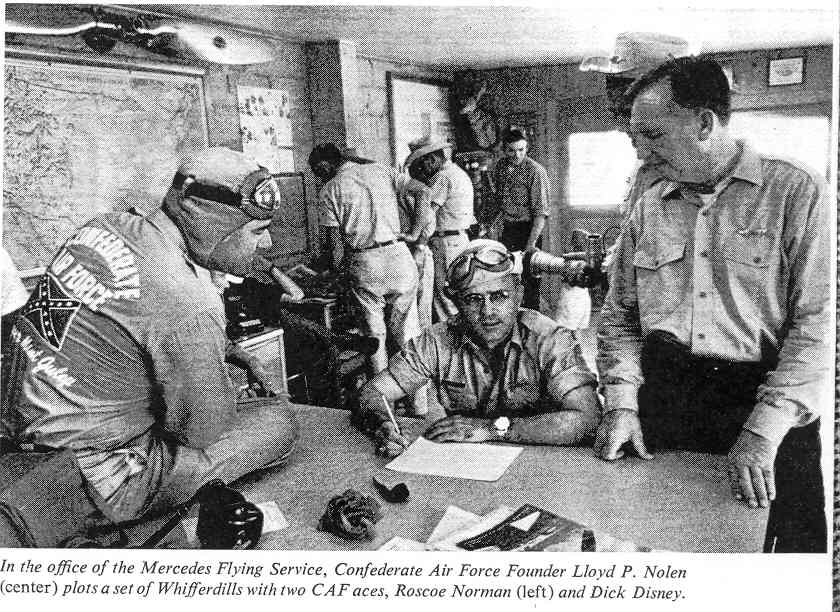
The Confederate Air Force was started in Mercedes by a bunch of retired World
War II pilots from the area. They desired to relive the past and save from
oblivion the outdated and rusting planes they flew during the war. So they
started buying them and fixing them up. The group was founded in 1958 and
already had 4 airplanes at that time. In 1960 their search began in earnest to
rescue what remained of the airplanes that had played such an important part in
winning WWII. They were being systematically destroyed. Of those that remained,
few were in flying condition. In 1961 the CAF was chartered as a nonprofit Texas
corporation to restore and preserve WWII era combat aircraft. When the year
ended they had 9 planes. In 1965 they established the museum at the old Rebel
Field in Mercedes. They quickly outgrew this and in 1968 build a new Rebel Field
at Harlingen, Texas. Every summer they gave air shows that demonstrated the
flying capabilities of the aircraft and people came from all around. My father,
having fought as a pilot in WWII, took his family to these shows for as long as
they continued. Today the CAF has over 11,000 members and a fleet of over 140
aircraft known as the Ghost Squadron. In 1991 they moved to Midland, Texas.
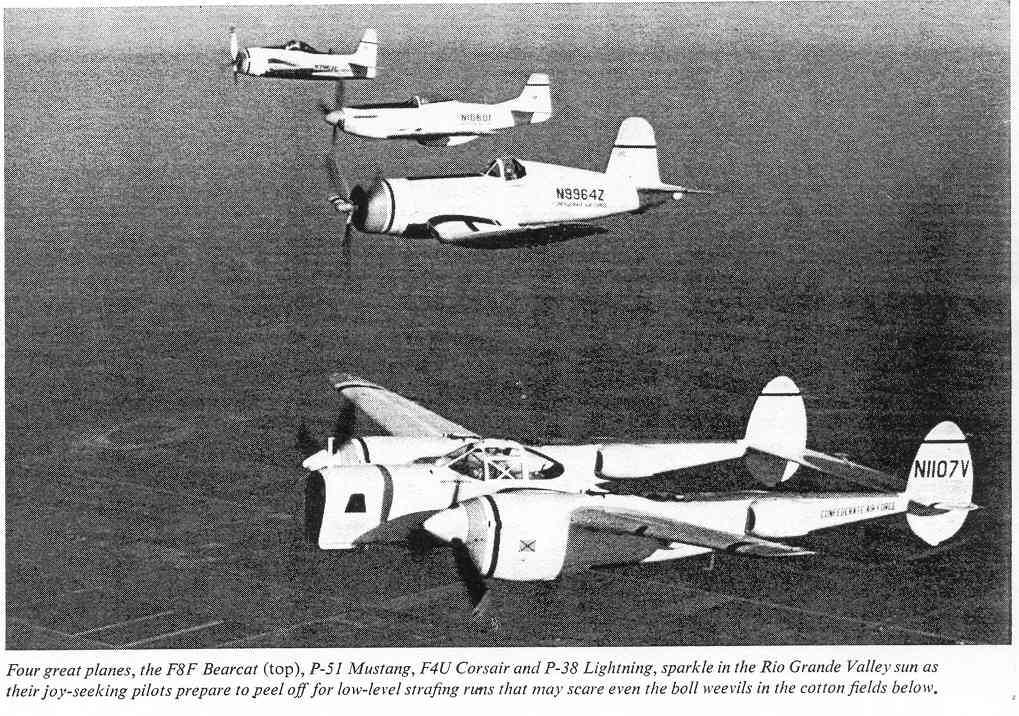
The Mercedes Chamber of Commerce organized the Rio Grande Valley Livestock Show and Agricultural Exposition, the forerunner of today’s show. The first show was held on the grounds of a local livestock sales yard in 1940. It was mostly lean-to’s sheds and make shift pens. In 1947 the show was incorporated and chartered as a nonprofit educational organization. The Board of Directors represented the 4 southernmost counties of Texas. The author’s Grandfather, Oliver Joseph Schaeffer was a member. Today the fairgrounds are situated on 100 acres with permanent buildings. The fair has provided an estimated 25 million dollars to educational organizations such as FFA and $-H. It has continued to grow and now ranks as one of the top 10 in the state.
The oral history for this paper came from a native of Mercedes, Lorraine
Schaeffer Kennedy and her husband William Bernard Kennedy. Lorraine taught for
many years in the city’s schools. Bill was a businessman who at one time worked
for the Magic Valley Co-op Electric Company. He later became a CPA and joined an
accounting firm that had offices in several valley towns. 
This is the interview of Lorraine Kennedy - Mercedes Texas.
Lee: When and where were you born?
Lorraine: I was born in Mercedes in 1923, one of a pair of twins. The Mercedes hospital was a converted hotel. A doctor and a nurse were both present at my birth.
Lee: Tell me what Prohibition was like for you?
Lorraine: Prohibition during the twenties did not affect us much, due to the proximity of the Mexican border. There was Rio Rico just across the Border. At that age, we could just go into bars.
Lee: You grew up during the Great Depression. Can you describe what that was like?
Lorraine: During the Depression, everybody was poor, so we didn’t notice it much. There were two theatres in town, one on the north side, and the other on the south side. The Hispanic population favored the north side theatre, which showed mainly Spanish movies. The south side showed movies for the Anglo population. The theatres weren’t actively segregated; they just preferred the north theatre. Another popular attraction was “Bank Night” at the theatres, when the bank would have a $50 or $100 prize based on the ticket number.
Lee: What was life like in Mercedes when you were a child? What conveniences did you have?
Lorraine: We had water, electricity, and phone service. The phone was a house line, where we had to pick the phone up and give a number to the operator. We finally got a radio in the late ‘30s.
Lee: How did the Civil Rights Movement affect your life?
Lorraine: The school system was a series of single grade campuses. Kids were bused all over. Input by Bill Kennedy…no questions were asked…he just wanted to input some Mercedes specific things he remembered.
Mercedes was the headquarters for the Magic Valley Cooperative, which was built as a result of the Rural Electrification Act of 1936. Maintenance crews would go up and down the valley using two-way radios. One phase power was originally available, and advanced to three phase power. The first new headquarters, maintenance, and storage were built in 1953, and opened in 1954. The cooperative still operates today.
Mercedes drilled a deep well in the 1950s. The water was so pure that a retired Brew master set up a brewery company named Valley Brewing Co., with their main product being Valley Royal Beer. The larger breweries did not want competition, and threatened to pull their product from retailers if they carried Valley Royal beer. The company died a fairly quick death.
The resort community of Rio Rico that Lorraine mentions has a historical
marker at the intersection of US 281 and FM 491 at Mercedes. The story on that
marker is as follows: “The Treaty of Guadalupe Hidalgo which ended the Mexican
War (1846-48) designated the main channel of the Rio Grande as the Mexico-U.S.
Boundary. Disputes arising from the frequent changes in the river’s course let
to the Treaty of 1884, which recognized only those river diversions resulting
from natural occurrences. The International Boundary Commission was established
in 1889 to administer the Treaty of 1884. In 1906 the American Rio Grande Land
and Irrigation Company dug an unauthorized canal about two miles south of here,
which altered the natural course of the Rio Grande. As a result, a 419-acre
section of U.S. property called El Horcon tract was isolated south of the river.
Although still U.S. territory according to the treaty of 1884, the tract and the
popular gambling and resort community of Rio Rico which flourished there during
the 1920s and 1930s became increasingly subject to Mexican administration and
jurisdiction. After the U.S. granted Mexico territorial rights over El Horcon
tract and Rio Rico in 1970, a native of Rio Rico sued the U.S. Government to
guarantee his U.S. citizenship. This lawsuit began an eight-year battle that
eventually led to U.S. citizenship for about 200 people born in Rio Rico prior
to 1970.” 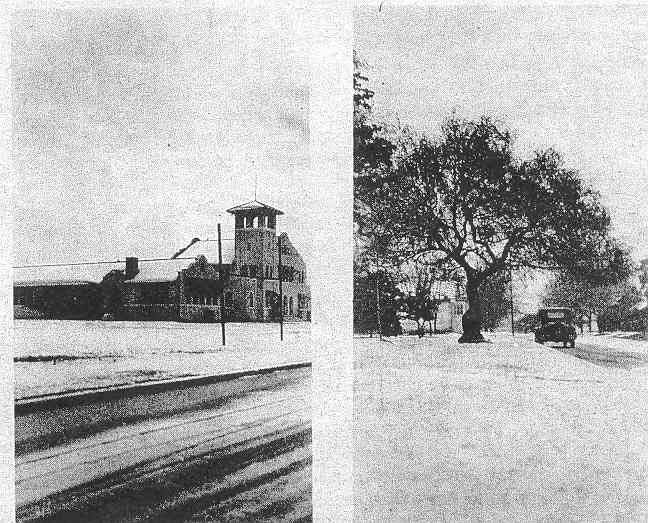
Mercedes has seen several floods, one major hurricane, and a suprising snowstorm in 1925. The first flood that I have a recorded history of was in 1909 that did very little damage because “there was so little to damage”. The Flood of 1922 was another matter. Mercedes residents tried with futile results to surround the town with temporary levees. These broke and the downtown area was flooded. The results of this experience were that the permanent levees which now surround the floodway were built. In 1932 this protected the town from a greater flood. In 1967 Hurricane Beulah struck the south Texas coast. This brought the usual high winds and enormous amounts of rain. It also brought an extremely high number of tornadoes. The Hurricane hit land near the mouth of the Rio Grande River and moved northward. The river became flooded due to the excessive rains and the fact that the ground was already saturated from the earlier rains in August and September. The flood plane between Mercedes and Weslaco was filled. The weir, or diversion dam, near Mercedes broke and as a result the town of Harlingen, south of Mercedes, was flooded.
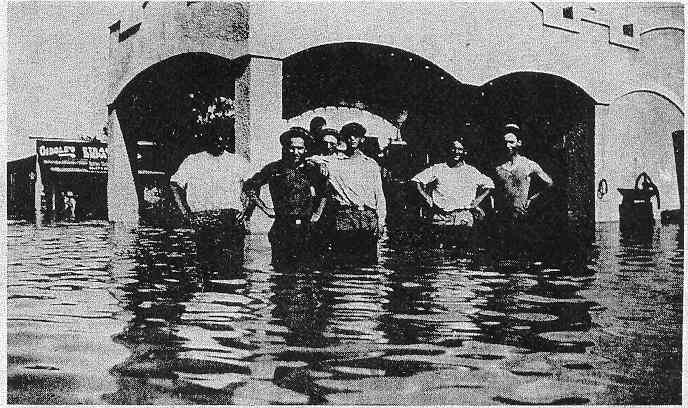 Being so close to Mexico and having such a large Hispanic population it is
inevitable that the troubles of the civil rights movement should have an impact
on the community. The struggles of the Hispanic people in this area came from
several causes. Part of it was the fact that the community had been built as a
business by people of European descent…in short Anglos. When the community was
established many of the residents of the area were of Mexican descent and spoke
only Spanish. This continued in the community at home in spite of the schools
trying their best to teach the now Americans English. Then there were the
migrant workers who came every year during harvest and planting time to work the
crops. They had to have special schools set up just for the children, because of
their shortened school year, and you could see these kids sitting in classes
till 5 or 5:30, long after the rest of the students had gone home for the day.
While the population was mostly Hispanic during that time and there was a strong
political structure in place that included many Hispanics in its workings the
business were mostly held by Anglos and thus so was most of the wealth. Many
movements were aimed at improving the lot of the Hispanic residents. At one time
La Raza Unida movement was active in Mercedes through the efforts of Muejeres de
La Raza Unidas.
Being so close to Mexico and having such a large Hispanic population it is
inevitable that the troubles of the civil rights movement should have an impact
on the community. The struggles of the Hispanic people in this area came from
several causes. Part of it was the fact that the community had been built as a
business by people of European descent…in short Anglos. When the community was
established many of the residents of the area were of Mexican descent and spoke
only Spanish. This continued in the community at home in spite of the schools
trying their best to teach the now Americans English. Then there were the
migrant workers who came every year during harvest and planting time to work the
crops. They had to have special schools set up just for the children, because of
their shortened school year, and you could see these kids sitting in classes
till 5 or 5:30, long after the rest of the students had gone home for the day.
While the population was mostly Hispanic during that time and there was a strong
political structure in place that included many Hispanics in its workings the
business were mostly held by Anglos and thus so was most of the wealth. Many
movements were aimed at improving the lot of the Hispanic residents. At one time
La Raza Unida movement was active in Mercedes through the efforts of Muejeres de
La Raza Unidas.
Today Mercedes is indeed growing and trying hard to educate its young people to meet the ever-increasing need for trade skills. A science academy has recently opened in the town. The North American Free Trade Act will no doubt have a large effect on its future development. At present the border bridge at Progresso, which was originally built by a couple of gentlemen from Mercedes, is being torn down and rebuilt to handle the much higher level of traffic it sees today. Mercedes is moving towards an increase in industrial business and has the space to do it in. Yet some of the computer technology that is developing so fast in our times seems strangely absent. The public library doesn't have a website. Many of the papers in the area are weekly papers. You have to travel to a larger town to find a good print shop. So while some of the towns in the Rio Grande Valley are becoming less rural Mercedes continues to be just that. One thing is sure…if Mercedes is to continue to grow she will have to change.
ANNOTATED BIBLIOGRAPHY:
Rio Grande Valley Chamber of Commerce - History Cookbook, Tales and Recipes of the Rio Grande Valley of Texas. Marjorie Johnston, Editor. New Santander Press, Edinburg, TX 1991
The New Handbook of Texas Vol. IV, Austin, TX - Texas State Historical Assn.
1996
This very useful book gave the most complete and detailed information on
the establishment of Mercedes.
Railroads of Texas, J.L. Allhands, The Anson Jones Press, Salido, TX
1960
This book confirmed information received in other sources and described
in some detail the hard labor that it took to clear the land and develop the
town.
Valley Proud Cookbook, Marjorie Johnson, Editor, New Santander Press,
Edinburg, TX 1991
A collection of family stories and recipes. Includes
history of establishment of Tampacaus and Tohica Ranches.
Mercedes…Yesterday and Today (commemorative historical booklet)
Mercedes
Chamber of Commerce 90th Anniversary Committee,
Connie Garza, Project
Chairman. 1997
This was the source of several photographs used in the paper.
Of special interest to me were the digging of the canal and the picture of the
Rio Grande Land and Irrigation Co. building.
Ranch Life in Hidalgo Co. Since 1850, Emilia Ramirez Schusior - Nuevo Santander Publishing Co., Edinburg, TX
Chatelle, Miriam, For We Love Our Valley Home, San Antonio Naylor Publishing
Co. 1948
This book provided a small tidbit on the name "Mercedes" and its
meaning.
Pierce, Frank C. A Brief History of the Lower Rio Grande Valley, The
Collegiate Press, George Banta Publishing Co., Menasha,Wisconsin 1917
Reports
bandit troubles from 1915-1916 and lists troop stationed at Mercedes, TX and
Llano Grande.
Stambaugh, J. Lee and Stambaugh, Lillian J. The Lower Rio Grande Valley of
Texas - It's Colonization and Industrialization 1518- 1953 The Jenkins
Publishing Co., San Felipe Press Austin, TX 1974
This book covered the
establishment of the Rio Grande Land and Irrigation Company.
"Mercedes' early history predates railroads, land developers" Mid-Valley Neighbors February 18, 1998
“Silver supervised layout of Mercedes town site”, Mercedes Enterprise,
Mercedes, TX September 15, 1982
This article gave a great deal of information
on the working that it took to establish the town and what Mr. Silver was doing
during that time. It also told about the mood of the people and the country
during that era.
“Early bridge-crosser found ‘things not seen before’”, Mercedes Enterprise,
Mercedes, TX
This newspaper article gave some good background information on
the Rio Rico resort community.
Historical Marker Trail Guide 2002, Celebrating Hidalgo County’s 15th
anniversary, The Monitor, McAllen, TX
This booklet that was a newspaper
insert gave the text and locations of historical markers in and around Mercedes.
“Science Academy Opens in Mercedes” Mid Valley Town Crier August 6th 1992
“Valley Was Once Noted for Producing Buttons”, The Monitor, McAllen, TX
November 5th, 1980
This newspaper article covered a historical industry that
several people remembered in their oral histories. This industry is almost
nonexistent in the US today.
“50 Years With Mercedes: From Brush Thicket to Thriving Town” – Hoyt Hager Mercedes Enterprise 1957
“Hotel was the center of social life here” - Mercedes Enterprise October 24, 1974
“The Confederate Air Force Flies At Last”, Dan Jenkins for Sports Illustrated, August 12, 1963, Volume 19, Number 7.
Photos from web page by Runyon. http://runyon.lib.utexas.edu
This website
had several very good photos that added interest to the story. I was delighted
to find the photograph of the horse with flag that the bandits had left in the
city park.
Web site http://www.army.mil/cmh-pg/Moh1.htm
Contains information on the Congressional Medal of Honor winners.
WEBSITES:
Mercedes Chamber of Commerce - History
History of the North Dakota National Guard
Congressional Medal of Honor Winners